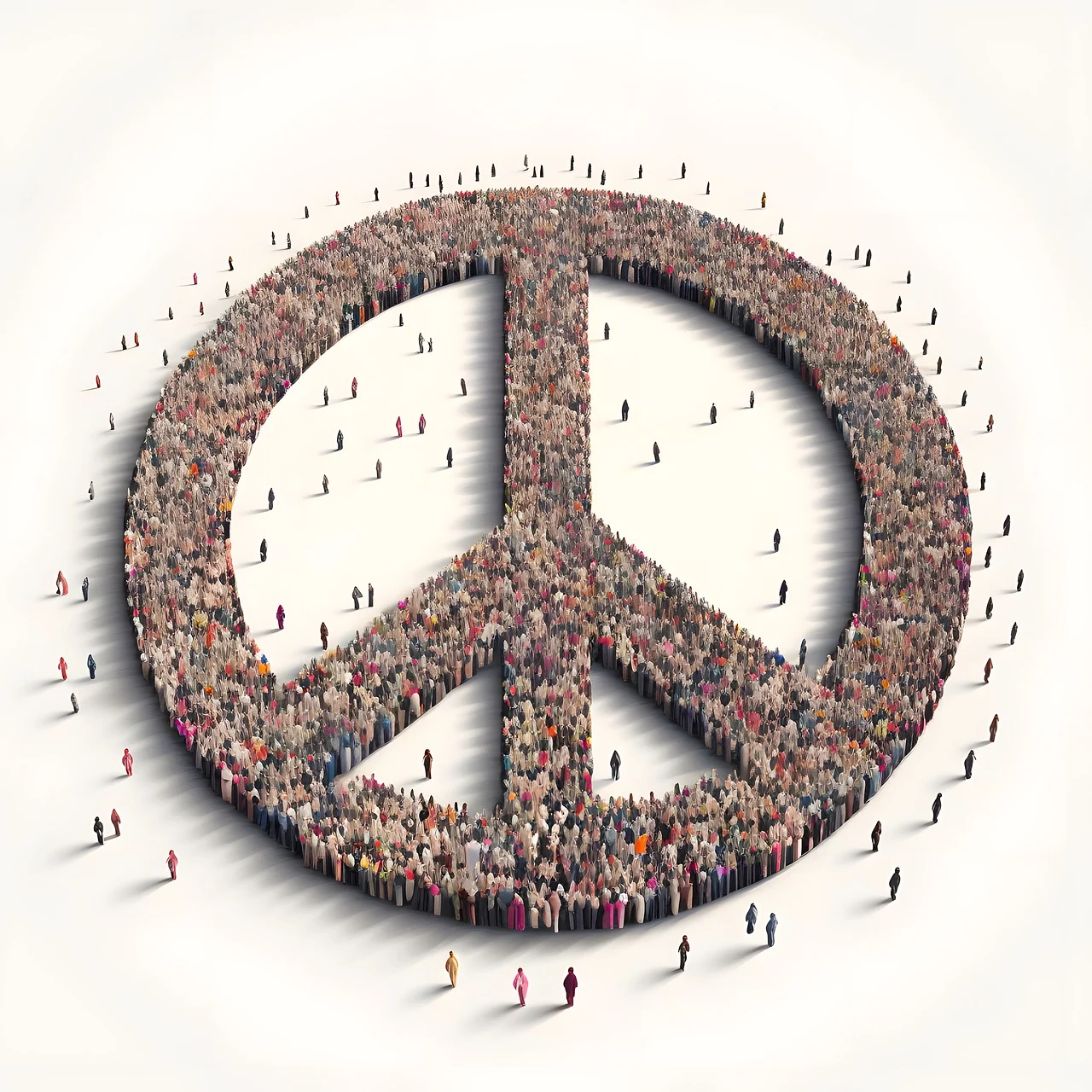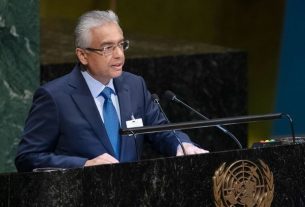A Bold Proposal for Lasting Peace: Leveraging Mediterranean Dredging to Resolve the Israeli-Palestinian Conflict
By Solomon Alaka
The Israeli-Palestinian conflict, one of the most protracted and complex territorial disputes in modern history, has caused immense human suffering, loss of life, and economic devastation. The central issue, rooted in a long-standing dispute over land, has remained unresolved despite numerous attempts at negotiation and peacebuilding. Given the impasse, a fresh approach that seeks to address the land issue in a neutral and constructive manner could be key to ending decades of violence and ensuring a future of stability for both Israelis and Palestinians. One such proposal gaining attention is the large-scale dredging of the Mediterranean Sea along the Gaza coast to create additional land that could be shared equally by both parties.
The Genesis of the Conflict and the Land Issue
The origins of the Israeli-Palestinian conflict can be traced back to competing historical claims over land, particularly in and around Gaza. Since the early 20th century, disputes over this area have escalated, with Israel and Palestine each asserting territorial and national rights over the same land. Despite international efforts, including the Oslo Accords and more recent peace initiatives, a lasting resolution remains elusive, and the cycle of violence continues, with both sides suffering significant losses.
The Flawed Proposals and Persistent Deadlock
Many proposed solutions over the years have been centered around the notion of territorial concession, with one side expected to make sacrifices at the expense of its sovereignty and national identity. Former U.S. President Donald Trump’s controversial “peace plan” proposed that Palestinians vacate the Gaza Strip, an idea that was widely condemned for violating international law and the human rights of those living in Gaza. Such proposals, alongside divisive slogans like “From the river to the sea,” only serve to deepen animosity, further polarizing the two sides and escalating the conflict.
After decades of violence and failed attempts at peace, it has become clear that neither side can dislodge the other from the region. The notion of one side relinquishing its claim to the land is no longer feasible, making it necessary to consider solutions that provide equitable access to land and resources for both Palestinians and Israelis.
A Radical but Practical Solution: Dredging the Mediterranean
In light of the continuing deadlock, a more innovative approach has been proposed: dredging the Mediterranean Sea along the coast of Gaza and Israel to create new land, which could then be fairly distributed between both sides. The land gained from dredging could provide much-needed space for development, resettlement, and long-term security, addressing the territorial issue while providing a neutral platform for cooperation.
Dredging, the process of excavating the seabed to create new land, has been successfully employed by other nations, including China, Saudi Arabia, and the United Arab Emirates, for large-scale projects such as artificial islands and port expansions. While environmental concerns are often raised in such projects, the successful examples of these countries demonstrate that, with careful planning and international oversight, it is possible to mitigate environmental risks while still achieving substantial results.
A Mediterranean dredging initiative for the Israeli-Palestinian conflict would require meticulous environmental assessments, with joint cooperation between both parties and neutral international bodies. These bodies would oversee the process, ensuring transparency, fairness, and a balanced approach to land distribution.
Legal and International Framework for Dredging
International law provides a framework for resolving territorial conflicts, especially those involving disputed areas under prolonged conflict. For dredging in the Mediterranean to be a legitimate and internationally recognized solution, it would need to adhere to the principles of international law, including respect for human rights, sovereignty, and environmental protection.
The United Nations Convention on the Law of the Sea (UNCLOS) would offer guidelines for such a project, particularly in areas like maritime boundaries, environmental impact, and shared resources. By working within this legal framework, a dredging initiative could offer both Israelis and Palestinians the chance to claim land in a way that is both lawful and neutral.
The Role of the International Community
For such a bold proposal to be successful, global cooperation would be crucial. The international community—especially countries with significant political and economic influence in the Middle East, including the U.S., the European Union, and Arab states—could play a pivotal role in supporting the dredging project. Financial backing from international organizations and governments could ensure that the project is sustainable and equitable.
The billions of dollars spent on sustaining the conflict, including military expenditures and aid to various factions, could be redirected toward this large-scale peacebuilding initiative. Redirecting these resources could demonstrate a genuine international commitment to resolving the conflict and investing in a peaceful and prosperous future for both peoples.
Addressing the Human Cost: Children and Future Generations
The ongoing violence in Gaza and Israel has taken an enormous toll on civilians, particularly children. According to UNICEF, over 1,500 Palestinian children were killed in the 2021 conflict alone, and thousands of Israeli children have also been affected by the violence. These children are the ones who will inherit the legacy of this conflict, and it is their future that is at stake.
A solution that prioritizes land for both Israelis and Palestinians, offering them a chance to live in peace and dignity, would not only benefit the current generation but also provide hope for future generations. By creating a land mass and shared space divided and developed for both peoples to thrive with clear boundaries and borders, the proposed dredging project could help break the cycle of violence and offer children in both communities the opportunity to grow up in a more stable and secure environment.
Conclusion: A Vision for Peace
The Israeli-Palestinian conflict is complex and deeply entrenched, with no easy solutions in sight. However, innovative and bold proposals like Mediterranean dredging offer a potential path forward. By creating new land that both Israelis and Palestinians can claim and share, the territorial dispute could be addressed in a way that is lawful, neutral, and collaborative.
This proposal requires international support, cooperation, and a collective willingness to seek peace. The resources that have been spent on sustaining the conflict could be better invested in fostering peace and rebuilding a region that has been ravaged by violence. The world must prioritize the future of the children affected by this conflict and consider solutions that promote shared prosperity over division.
In the words of former U.S. President Jimmy Carter, “Peace is not simply the absence of conflict, but the presence of justice.” It is time for the international community to come together and prioritize justice, equity, and peace for all those affected by the Israeli-Palestinian conflict.
Here are some references that could be useful in supporting both the concept of land reclamation and peace proposals for the Israeli-Palestinian conflict, as well as dredging projects in other countries:
- Dredging as a Land Reclamation Technique:
- Zhang, Y. (2017). China’s Land Reclamation Practices in the South China Sea. Environmental and Development Economics. Cambridge University Press.
- Provides an overview of how land reclamation via dredging has been successfully carried out in the South China Sea.
- Dredging and Land Reclamation in the Arabian Gulf. (2019). International Journal of Civil Engineering. Elsevier.
- Discusses large-scale dredging projects undertaken by nations like Saudi Arabia for land reclamation and urban development.
- Zhang, Y. (2017). China’s Land Reclamation Practices in the South China Sea. Environmental and Development Economics. Cambridge University Press.
- Middle East Conflict and Land Proposals:
- The Israeli-Palestinian Conflict: A Brief History. (2017). BBC News. Link
- A comprehensive history of the conflict, providing an understanding of the territorial disputes and the deep roots of the Israeli-Palestinian issue.
- Finkelstein, N. G. (2003). Image and Reality of the Israel-Palestine Conflict. Verso.
- A critical analysis of the historical and political dimensions of the conflict that includes discussion on land disputes and territorial claims.
- The Israeli-Palestinian Conflict: A Brief History. (2017). BBC News. Link
- International Peace Proposals:
- The Oslo Accords and the Israeli-Palestinian Peace Process. (1993). U.S. Department of State, Bureau of Public Affairs. Link
- The Oslo Accords, which aimed to create a framework for peace, serve as a reference point for any future discussions on peaceful resolutions.
- The Road to Peace: A Call for Shared Solutions. (2021). Foreign Affairs. Link
- A detailed analysis of potential solutions and frameworks for peace, including the need for shared spaces in conflict zones.
- The Oslo Accords and the Israeli-Palestinian Peace Process. (1993). U.S. Department of State, Bureau of Public Affairs. Link
- International Law and Land Reclamation:
- Brownlie, I. (2008). Principles of Public International Law. Oxford University Press.
- This book outlines legal frameworks and considerations in international law that could guide a shared land reclamation process in conflict zones.
- International Environmental Law and Land Reclamation. (2017). International Law Review. Link
- This article examines the environmental, legal, and ethical considerations of large-scale land reclamation projects.
- Brownlie, I. (2008). Principles of Public International Law. Oxford University Press.
These references provide detailed insights into the technical aspects of dredging for land reclamation, the ongoing challenges of the Israeli-Palestinian conflict, and how international frameworks could potentially foster a shared solution. They offer a well-rounded view of the current situation, historical context, and possible paths forward for lasting peace.



